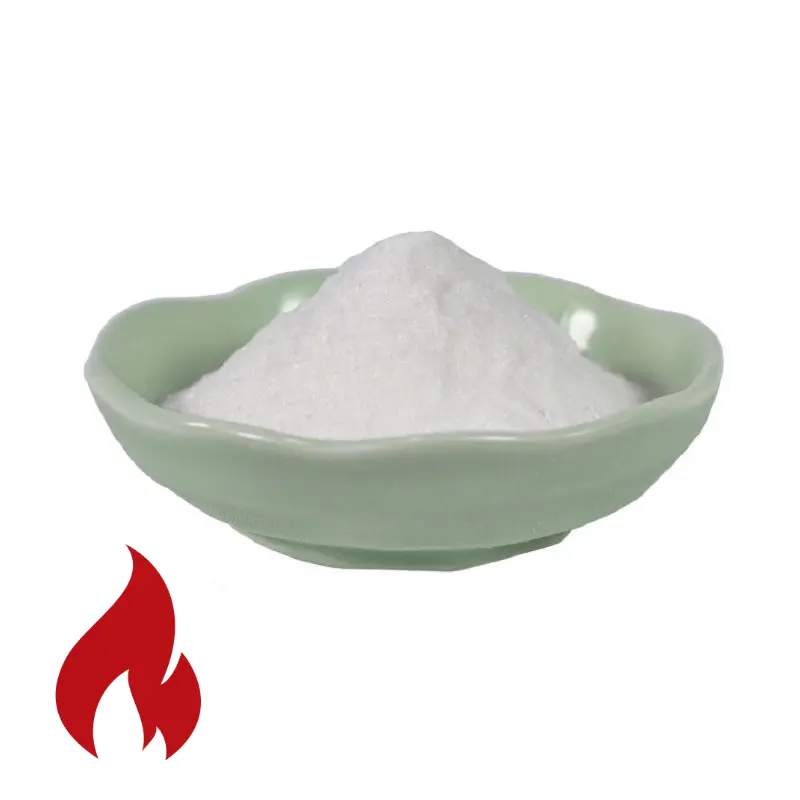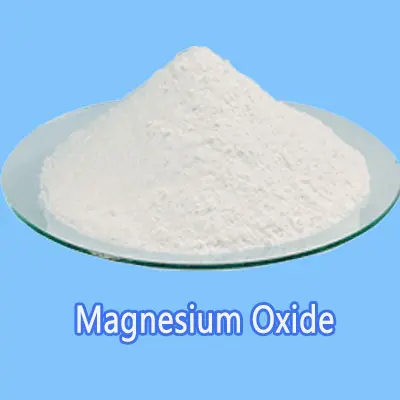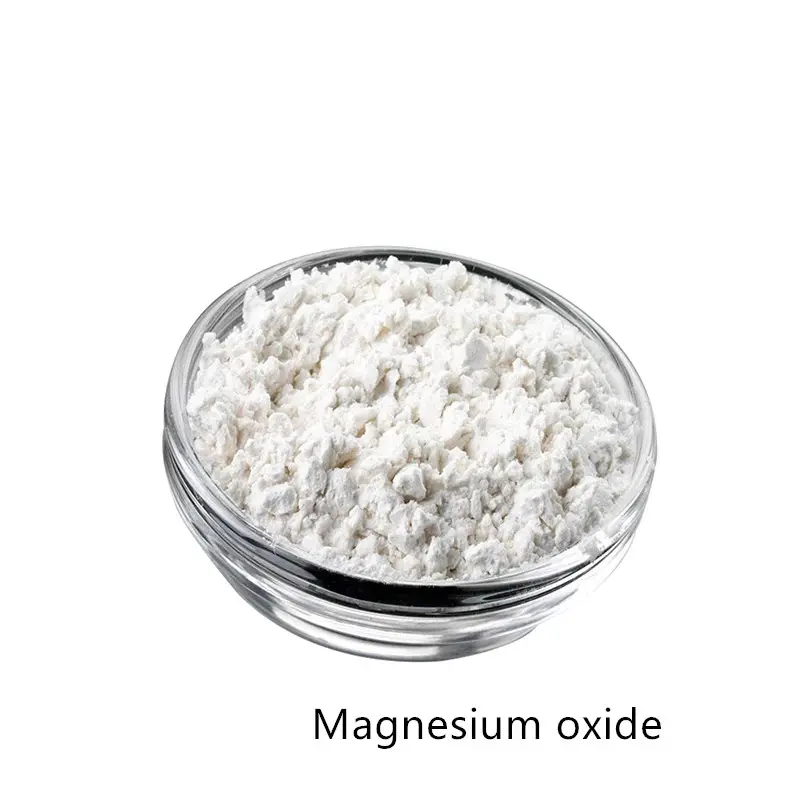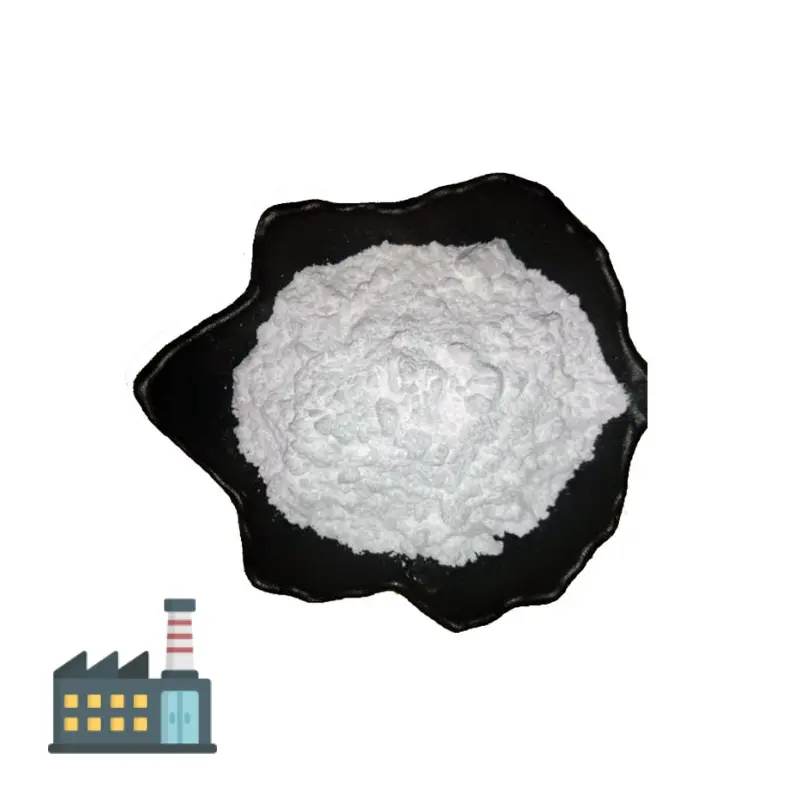China’s magnesite resource reserves rank among the top in the world, and is also the world’s largest magnesium producer. Magnesite resource reserves are highly concentrated, with many large and medium-sized deposits, excellent ore quality and strong competitiveness in the international market; magnesite deposits are dominated by carbonatite-type deposits; magnesite is highly investigated and highly utilized. After processing magnesite can be widely used in refractory materials, new fireproof building materials, metallurgical ironmaking industry, extraction of magnesium metal and chemical industry.
Industry usually will magnesite for preliminary calcination to get magnesium oxide. Different calcination temperature can produce different physicochemical properties of magnesium oxide, mainly divided into light burning magnesium (700 ~ 1000 ℃), heavy burning magnesium (more than 1000 ℃), electrofusion magnesium oxide (2500 ~ 3000 ℃). Lightly burnt magnesium oxide has high specific surface area and high chemical activity, as an important chemical raw material and intermediate, it has a broad market and application prospects.
Lightly burnt magnesium oxide, also known as lightly burnt magnesium oxide or caustic magnesium oxide, is an important product of magnesium-containing minerals calcined or otherwise processed, and is mainly produced by calcining natural magnesite at 700~1000℃.
Lightly burnt magnesium oxide product specifications for 40 ~ 250μm ranging, according to different production methods and quality standards, can be divided into ordinary, granular, high purity, active and other specifications of the product. Ordinary burnt magnesium oxide, particles of burnt magnesium oxide calcination temperature of 900 ~ 1000 ℃ under the preparation of magnesium oxide. But the disadvantages of high temperature and high yield are especially obvious, that is, low activity and poor gelling properties. However, the domestic is still the main product, the product more than 70% of the total output of light burnt magnesium oxide, its own value and added value are low, and is not suitable for the chemical industry as well as building materials. The calcination temperature of active light burnt magnesium is 700~800℃, light burnt magnesium has high dispersion, high chemical activity, strong cementing performance, and can be used to prepare magnesium cement and other different materials.
The paper is the best way to get the best magnesium oxide, and the best way to get the best magnesium oxide. In order to get the best light burning magnesium oxide products, each researcher has carried out research experiments for many times, domestic and foreign researchers have done a lot of research on the process conditions of calcined magnesite preparation of light burning magnesium oxide, and the results have found that the following points have a great influence on the activity and purity of light burning magnesium oxide products.
■Calcined temperature is the primary factor affecting the activity and purity of light-fired magnesium oxide
Zhao Ying used Liaoning Dashiqiao magnesite as raw material to prepare high purity magnesium oxide, and the study showed that the optimal calcination conditions of magnesite are: calcination temperature is 800℃, calcination time is 2h; Birchal et al. used magnesite in Bahia State, Brazil as the object of their study, and found that the temperature is the main factor affecting the specific surface area and reactivity of light-fired magnesium oxide; Liu Xinwei et al. used Liaoning Haicheng magnesite as the raw material to prepare light-fired magnesium oxide Liu Xinwei et al. used Liaoning Haicheng magnesite as raw material to prepare burnt magnesium oxide, the study showed that the optimal calcination conditions are: calcination temperature of 750℃, calcination time of 1.5h, particle size of 1mm; Ren Weikang et al. used Hejing magnesite as raw material, the study showed that the optimal heating rate of calcination is 5℃/min, the calcination temperature has the greatest influence on the activity of burnt magnesium oxide, the raw material particle size is next to it, and the effect of heat preservation time is small.
Currently for the calcination temperature is more unified conclusion is with the increase of calcination temperature, the generation of magnesium oxide particles, the smaller the specific surface area, the lower the activity; with the prolongation of the holding time, the magnesium oxide particles increase that is, the specific surface area decreases, the activity decreases. At the same time, due to different regions, different types of magnesite impurity content is different, resulting in each specific test of the best conditions are different, the reason may be the impurity of the specific heat capacity and magnesite specific heat capacity is different, the degree of heat absorption is different resulting in, but there is still a law to follow.
■The rate of temperature rise also has a certain effect on the activity of light-fired magnesium oxide products
Temperature rate on the light burning magnesium activity of the influence of the law: when the faster the rate of heating, the larger the specific surface area, the activity of MgO is high. And the heating rate is slow, then there are defects in the magnesium oxide grain will tend to regular integrity.
■Particle size has a certain effect on the activity of lightly burned magnesium oxide products
In addition to calcination temperature, holding time, magnesite particle size will also affect the activity of magnesium oxide, but the effect of particle size is smaller. The effect of particle size on the activity of lightly burned magnesium can be attributed to the reduction of particle size within a certain range so that the cohesion is reduced, and the CO2 inside the crystals is more easily precipitated, thus reducing the activation energy of the reaction.
■ Salt lake water as raw material can also be produced light burned magnesium oxide products
In addition, in addition to calcined magnesite can be obtained, salt lake water can also be used as a raw material for the preparation of light burned magnesium. Qiyu et al. to the Xinjiang salt lake waste hydrated magnesium chloride as raw material, the use of ammonium carbonate method for the preparation of high purity magnesium oxide. Ammonium bicarbonate take solid-liquid mixing charging, Mg2+ concentration is 1.5 mol/L, the material material quantity ratio NH4HCO3/Mg2+ is 3:1, pH 10, reaction temperature is 90 ℃, time is 3.0 h. The basic magnesium carbonate produced under this condition is calcined at 750 ℃ for 3 h, and the purity of magnesium oxide can reach 99.28%. The product has good crystallinity and high purity, and the magnesium oxide is spherical with good dispersion.
■Effect of storage time on the properties of lightly burned magnesium oxide
Zhang Shouzhi et al. in the presence of time on the performance of light burnt magnesium oxide in the article, the use of bags with a plastic liner, in order to the liner zipped, the outer bag sewing package will be rotary kiln production of four kinds of different activities of light burnt magnesium oxide stored in the warehouse at different ages after the sampling, respectively, to test the hydration activity, the amount of burnt loss and expansion properties, sampling after the end of the original package according to the original packaging way to re-lined zipped, the outer bag sewed package to continue to be stored, to the specified age after sampling, and then the original packing method. After sampling, the inner liner was re-tied and the outer bag was sewn in the original packaging and continued to be stored until the end of the test.
The results show that: 12 months storage age, storage time on the light burned magnesium oxide hydration activity reaction time has little effect.
Summary:
Li Xiaohui et al. in Xinjiang Jianshan magnesite preparation of light burned magnesium oxide calcination process of the article introduced, using microwave muffle furnace heating, calcination time, temperature rate and raw material particle size on the light burned magnesium oxide activity and purity of the influence of the less, the preparation conditions are relaxed, especially when the raw material particle size is not uniform, the use of microwave heating is more conducive to the preparation of light burned magnesium oxide. At present, the light burning magnesium oxide is towards different kinds of raw materials calcination conditions more refined, more optimized direction.
Method of producing magnesium carbonate by magnesite carbonization method
The present invention relates to a method of producing magnesium carbonate, in particular, a method of producing magnesium carbonate by magnesite carbonization method.
The raw materials for the production of magnesium salt are roughly of two types, one is bitter brine from seawater or lake water, and the other is mineral raw materials, mainly dolomite and magnesite, dolomite mainly contains about 40% of magnesium carbonate and about 50% of calcium carbonate; magnesite contains about 90% of magnesium carbonate. There are three current methods of magnesium carbonate production: soda ash method, ammonium carbonate method and carbonization method. Reference to the “magnesium salt technical information” eighth national magnesium salt technology information exchange will be compiled papers, October 1995 printing, issued by the Ministry of Chemical Industry, inorganic salt information station provided by the public publication 17 – 21 pages recorded by Mr. Chen Sicong, “carbonization of magnesium oxide method of obtaining a new process experimental research,” the dolomite as raw material by digestion, secondary carbonization, extrusion separation, pyrolysis, separation, dehydration to obtain magnesium carbonate, magnesium carbonate through the Magnesium oxide is produced by forging and burning. The production of magnesium carbonate by dolomite carbonization is the commonly used method at present. But with dolomite as raw material, its magnesium carbonate up to forty-two percent, the rest is calcium carbonate, the production process of calcium, magnesium separation trouble, a difficult to separate thoroughly, magnesium containing calcium is not easy to reach the high-grade products, pay the product of calcium production value is low, but also contains magnesium, is not popular, so the use of dolomite as a raw material, more energy consumption, high cost. And the use of magnesite as raw material for the production of calcium carbonate using the carbonization method, because magnesite is not easy to digest, and so far did not form the carbonization method of production process.
The purpose of the present invention is to take advantage of the characteristics of magnesite high magnesium content to solve the problem of magnesite digestion is difficult to magnesite, magnesite as raw material to form a new process of carbonization method of production of magnesium carbonate, reduce energy consumption, simplify the separation process, improve the purity of the product, and reduce costs.
The technical program of the invention is as follows:
Take magnesite as raw material to manufacture magnesium carbonate by the following process steps:
Calcination: calcine the raw material mixed with coal, the main reaction formula:
Digestion: the calcined material is crushed and stirred with water to make a suspension, the main reaction formula:
Carbonization: the digested suspension, diluted into the carbonization tower convection carbonization, carbon dioxide used in carbonization for the calcined magnesite kiln gas purification, the main reaction formula:
Liquid-solid separation: the solid impurities in the magnesium bicarbonate solution is removed:
Pyrolysis: the magnesium bicarbonate solution after removing impurities will be pyrolyzed under the temperature condition of 80-100℃, the reaction formula:
Solid-liquid separation: the pyrolyzed magnesium carbonate is separated from the liquid and dried to obtain magnesium carbonate products, and the waste water is returned to the digestion process.
Digestion of the material particle size 200-300 mesh.
Digestion temperature 60 ℃ ± 10.
The obtained magnesium carbonate will be calcined at a temperature of 800-900 ℃ to obtain magnesium oxide, reaction formula:
The obtained carbon dioxide is returned to the carbonization process for use.
Advantages of the present invention:
(1), high recovery rate, energy saving: carbonization method to produce magnesium salt, magnesium raw materials account for a quarter of the cost, electricity, coal accounted for three-quarters of the cost, the production of a ton of magnesium carbonate with dolomite need five tons of ore, according to 40 yuan per ton total of $ 200, and with magnesite only two tons, 120 yuan per ton total of 240 yuan, slightly higher than the dolomite, and the dolomite production of magnesium salt consumes 4 tons of coal per ton, magnesite only 2 tons per ton, per ton by 100 yuan calculation save 200 yuan. Electricity: dolomite tons consume 1000 kilowatts, magnesite tons consume 500 kilowatts, per kilowatt electricity price of 0.50 yuan, 500 kilowatts to save 250 yuan, and all other workload are roughly reduced by half. Dolomite carbonization method for magnesium salt effective energy consumption is only 40% more than the magnesite carbonization method of its effective energy consumption in more than 90%. The same energy consumption and its recovery rate is more than double.
(2), simplify the separation process: high-quality magnesite only less than five percent of silicon, calcium, aluminum and other impurities, its main component is magnesium carbonate, and dolomite also has five percent of silicon, calcium, aluminum and other impurities, and its own only 42% of magnesium carbonate, the rest of the calcium carbonate 53%. Calcium and magnesium separation should also be in the completion of the main process “carbonization” can only be carried out after a separation is also difficult to separate clean, separated from the calcium should also be drying, drying, crushing, recycling of calcium carbonate products (selling price of not more than 500 yuan tons), the latter part of the two sets of equipment to be operated separately, increasing the trouble.
(3), easy to improve product purity:
Chemical products to high content, less impurities for high-grade. Magnesium salt is the same, industrial hydration of basic magnesium carbonate superior products containing a variety of impurities (excluding water) ≤ 0.751%, a product ≤ 1.2%. Industrial magnesium oxide superior product total impurities ≤ 1.3853%, first grade ≤ 2%, qualified products ≤ 2.85%.
As for the magnesium content, high-quality magnesite ore has reached the standard of magnesium content of superior products. It can be seen that the purpose of the whole process is to remove impurities and purification. High-quality magnesite contains no more than 4 impurities, which are mainly silicon, calcium, aluminum, manganese and so on. And






